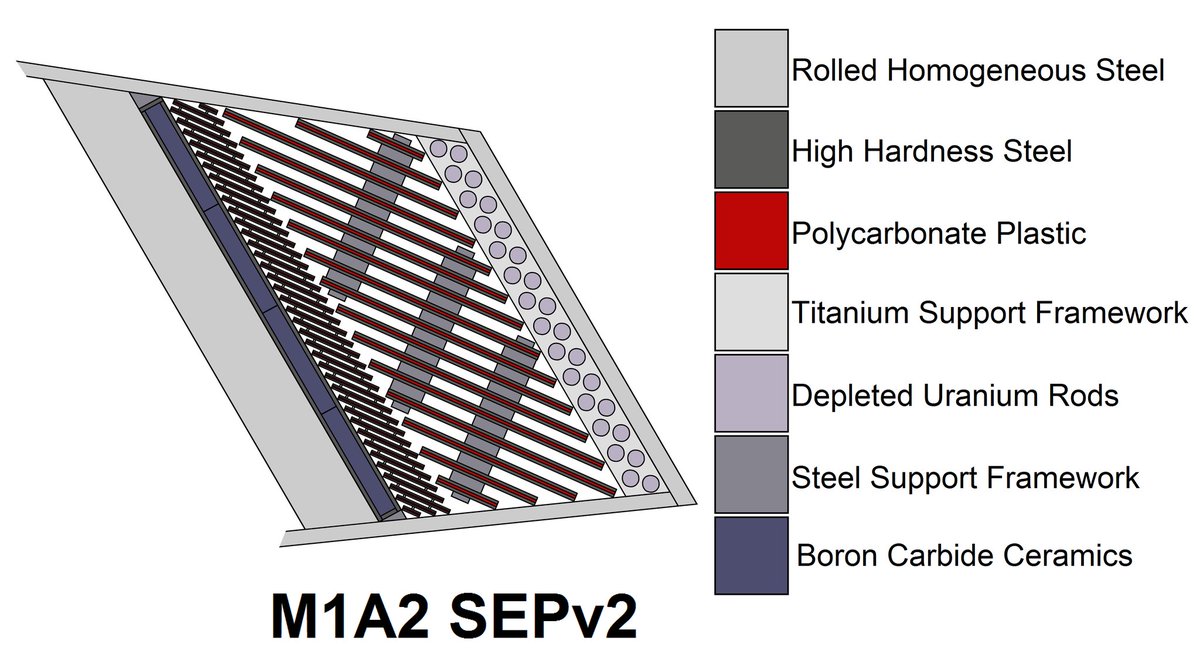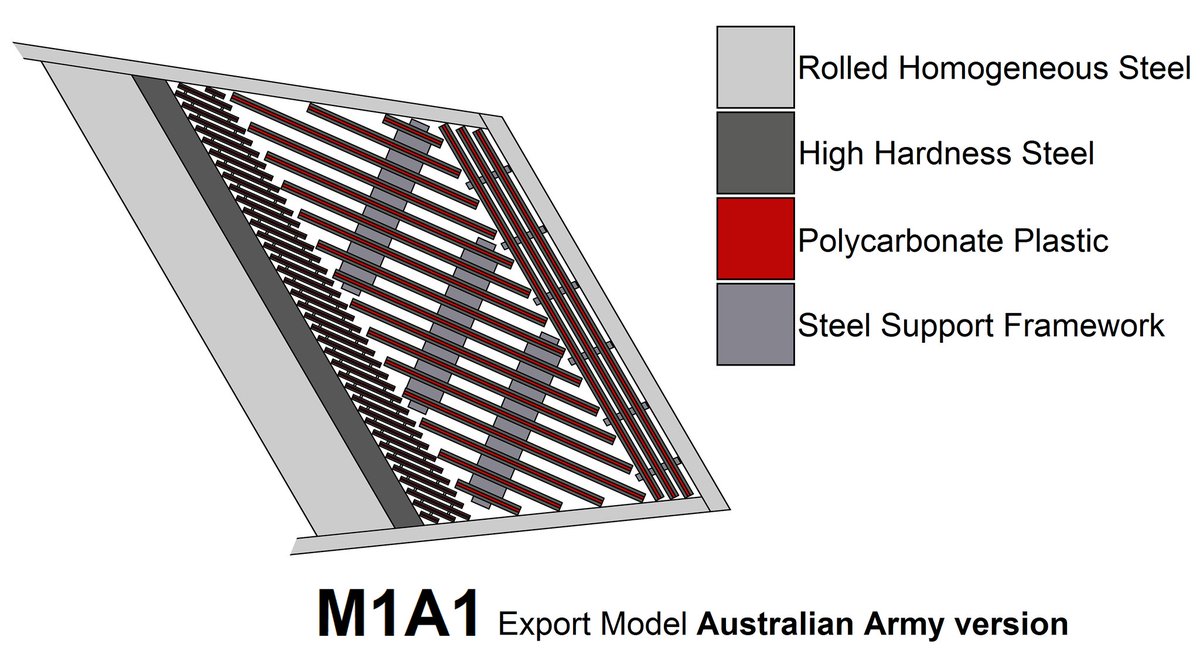I updated my Abrams turret composite armor illustrations based on the armor of the M1150 ABV and other information I got from some experts.
It turns out the only times the physical thickness of the turret armor was increased was on the M1A1 in 1985 and on the M1A2 SEPv3 in 2020.



It turns out the only times the physical thickness of the turret armor was increased was on the M1A1 in 1985 and on the M1A2 SEPv3 in 2020.




The downgraded composite armor of export Abrams models likely only reverted back to the original BRL-1 NERA arrays which used rubber.
However, the M1A1s sold to the Australians has the same third generation composite armor used by American Abrams tanks, just without the DU armor



However, the M1A1s sold to the Australians has the same third generation composite armor used by American Abrams tanks, just without the DU armor



The original BRL-1 composite armor of the M1 Abrams was a rubber based Non-Explosive Reactive Armor developed by the Aberdeen Ballistics Research Laboratory.
The Abrams never used the British Chobham armor.
The Abrams never used the British Chobham armor.

• • •
Missing some Tweet in this thread? You can try to
force a refresh









































